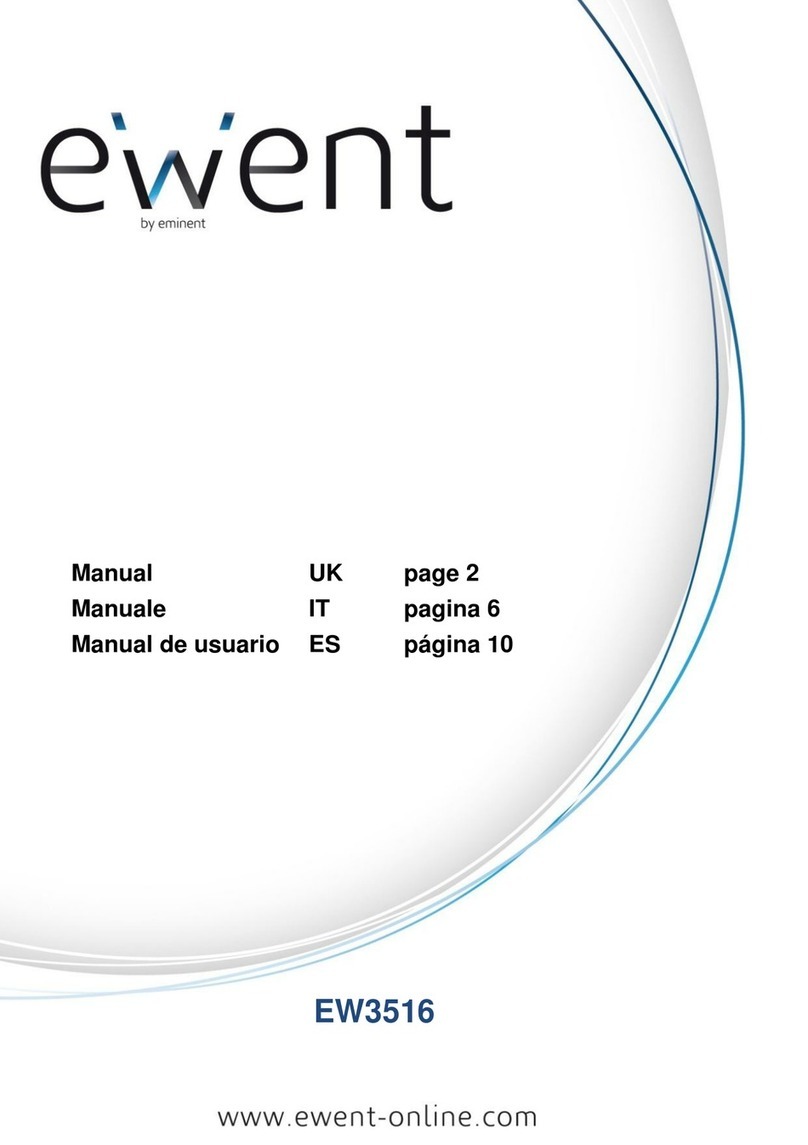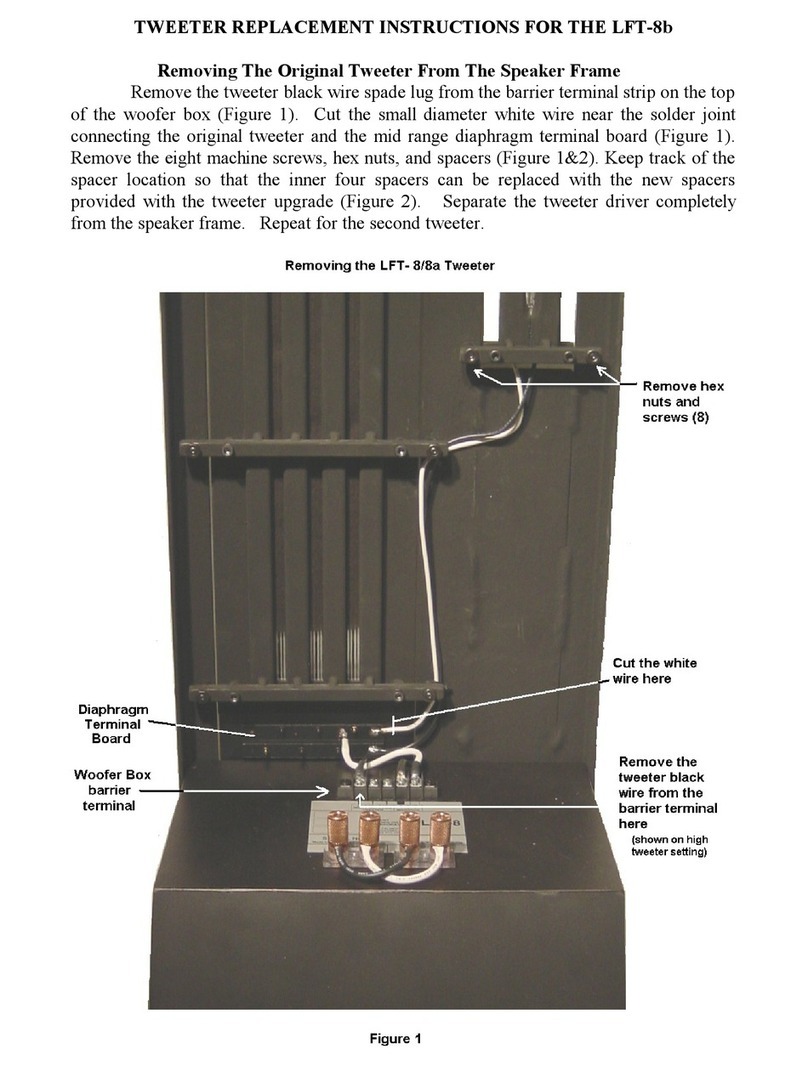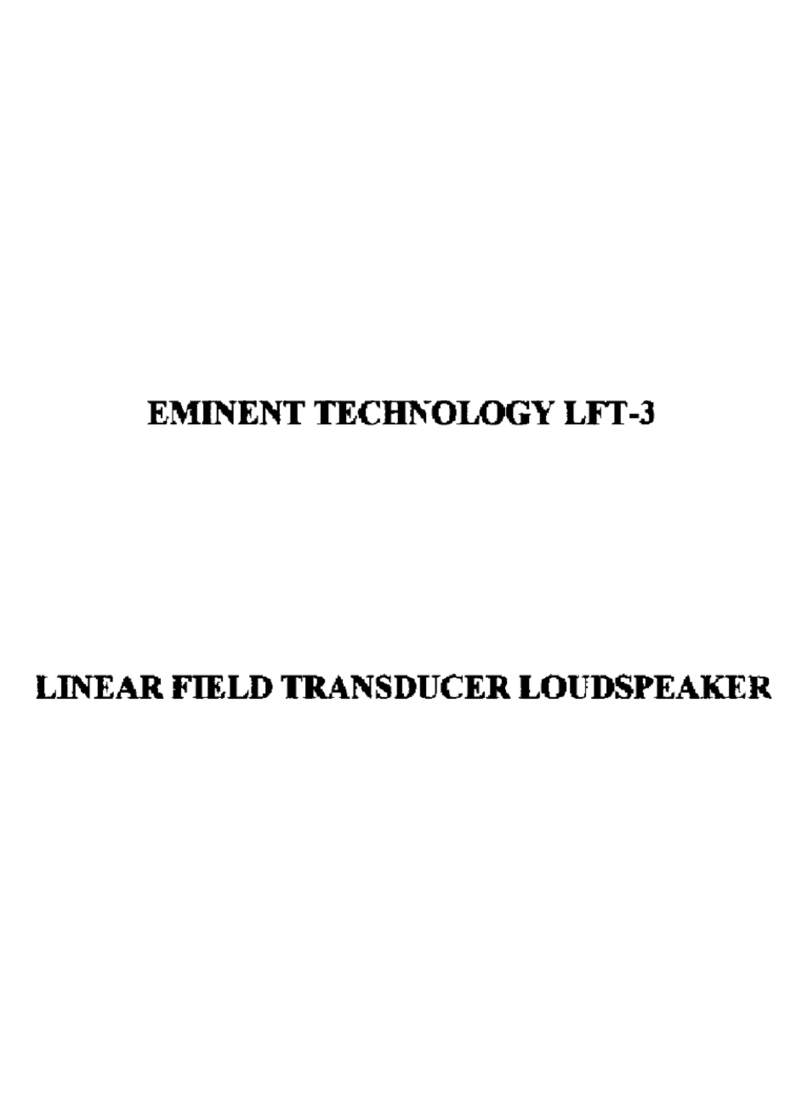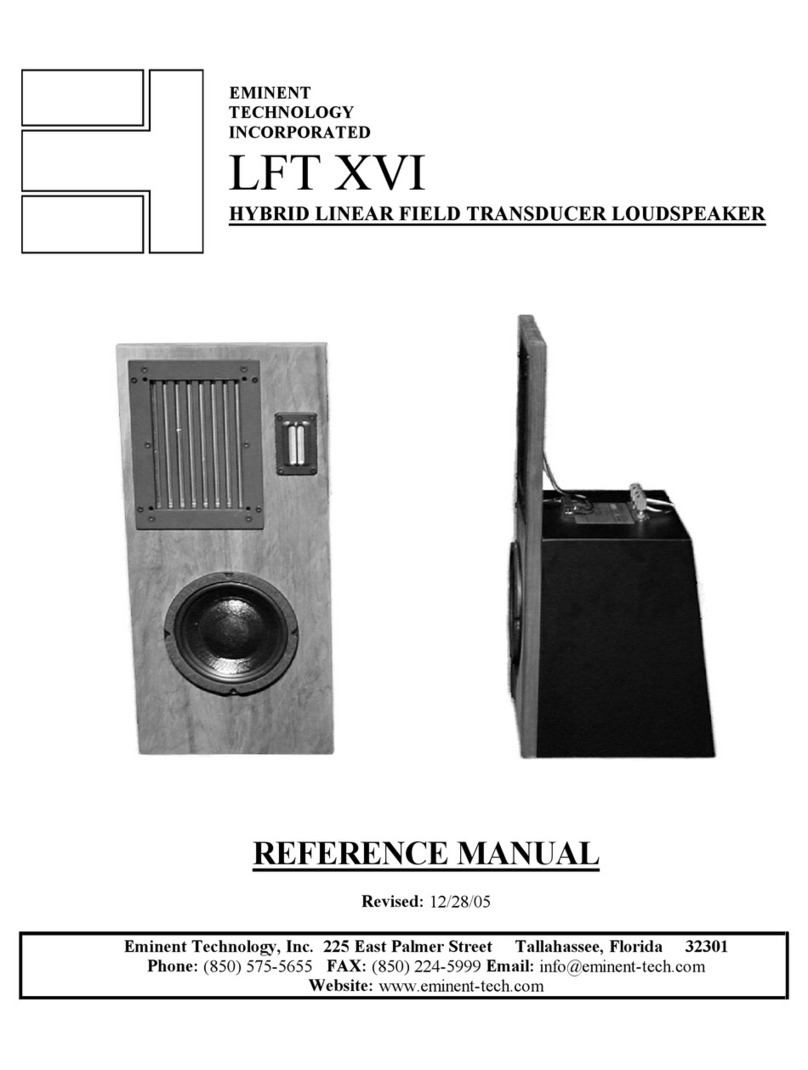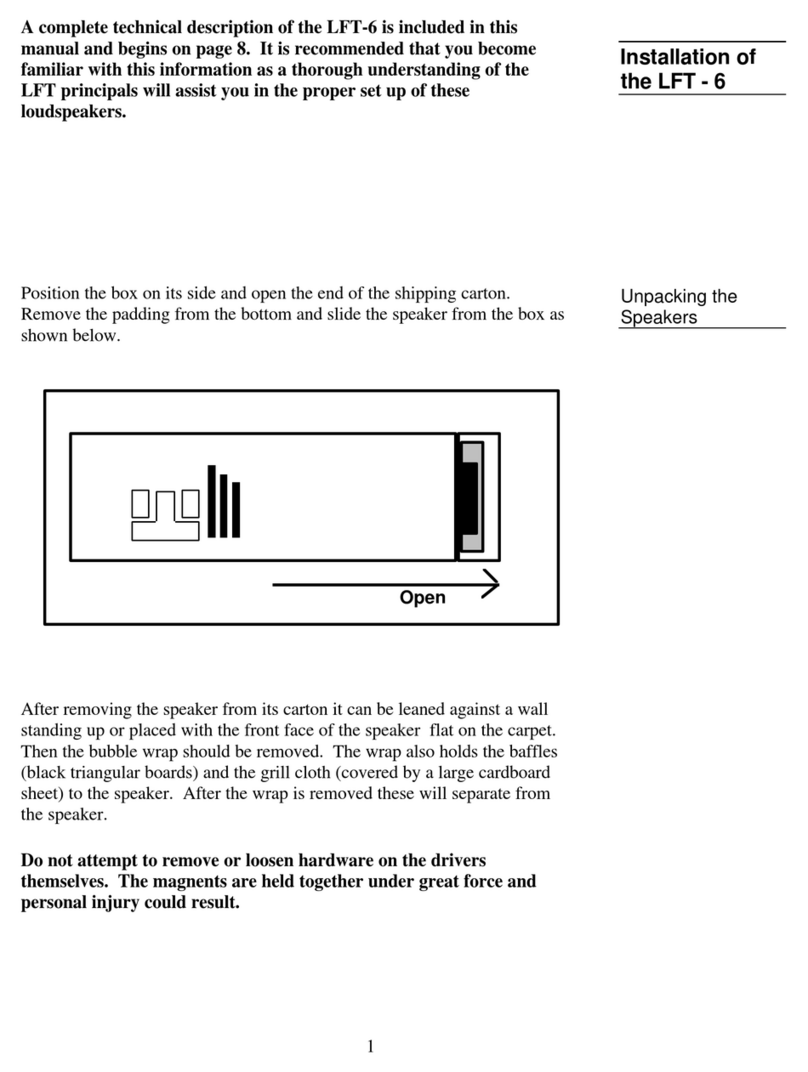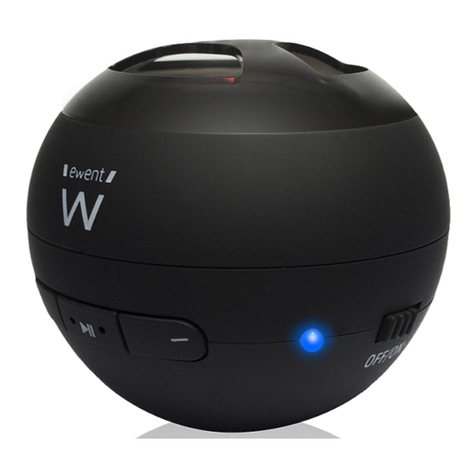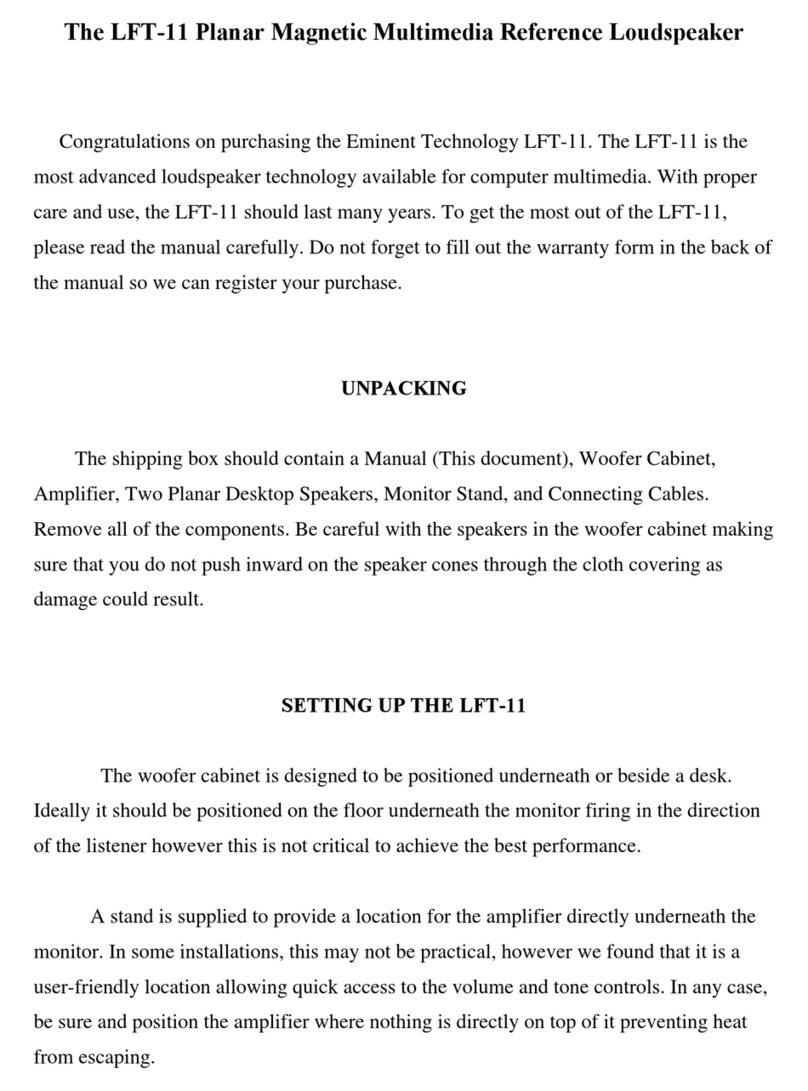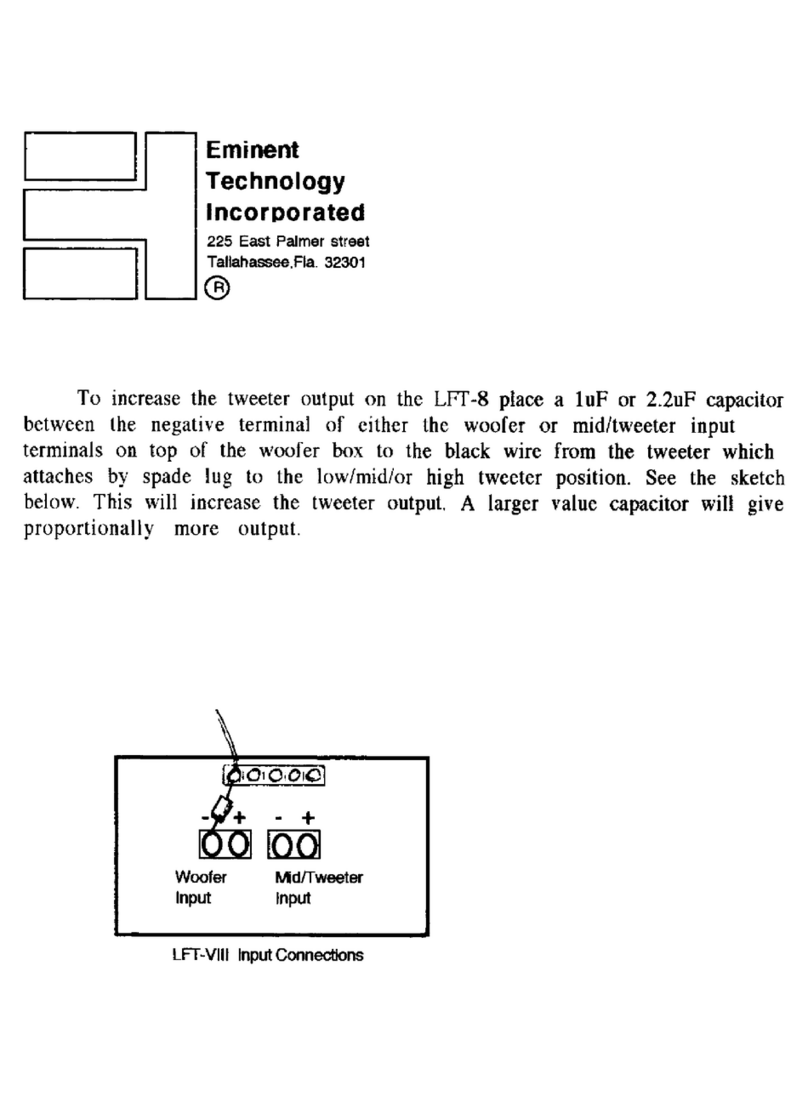
8
EVALUATING EARLIER APPROACHES
Not surprisingly, each of the approaches described above has its own unique set of pros and
cons. The electrostatic, because its diaphragm is so thin and light, offers exceptionally good transient
response and reproduction of subtle, low-level musical detail. And, because it is a true push-pull
device (i.e., its diaphragm is, by design, driven from both the front and the rear), the ESL operates in a
linear fashion. Typically, gross distortion results only when the driving amplifier clips into the
speaker, or when, in an attempt to play the speaker louder than its design allows, its step-up
transformer reaches a point of saturation.
On the negative side of the ledger, the ESL does require passing the amplified musical signal
through a transformer, which can introduce its own colorations and non-linearities. Also, some ESLs
are prone to a condition known as arcing: Under the conditions of stress induced by playing an ESL
loudly, it is not uncommon for an electrical spark to jump between one stator and the diaphragm (a
phenomenon exactly analogous to lightning), burning a minute hole in the diaphragm and, over time,
causing failure.
As for the planar magnetic, its strengths are similar to those of the ESL--although the addition
of several feet of wire and an adhesive coat make for a somewhat more massive diaphragm, limiting
this design’s transient capabilities by comparison. However, the planar magnetic requires no step-up
transformer or bias voltage supply, and it has the added benefit of being an extremely manageable
load for most amplifiers. However, the most specific drawback of the traditional planar magnetic is
that it is a single-ended (as opposed to push-pull) device: As the diaphragm’s physical excursion
increases, the voice grid moves further away from its optimal location within the permanent magnetic
field (at least in one direction). Thus, at the very instant when this speaker is called upon to reproduce
large-amplitude waveforms, it is least able to do so without distortion.
In many ways, a ribbon driver can be an excellent performer: the moving element (the
“ribbon” itself) is extremely light, allowing good “speed” and transient performance as well as
freedom from coloration. There is no significant physical structure on either side of the ribbon’s
radiating pattern. The ribbon’s main problem is not one of performance but of application: it cannot
be used to reproduce low frequencies. To create a moving element large enough to generate
frequencies lower than a few hundred Hz would mean moving opposing magnetic poles so far apart
that they would no longer exert a sufficient magnetic field over the entire area of the ribbon.
Also, when a ribbon is operated at frequencies approaching the element’s own resonant
frequency (which is naturally quite low, due to its high compliance), the ribbon element stretches and
“bows” to a point where it is no longer within the magnetic gap. To get around either of these
problems means to move the permanent magnet structure from the edges of the element to one entire
side of the element, and/or to bond the element to a “host” diaphragm, such as a sheet of Mylar, and to
clamp that diaphragm around its perimeter. In either case the driver is no longer a ribbon; it is, in fact,
a planar magnetic. To date, no one has succeeded in creating a full range ribbon loudspeaker.
